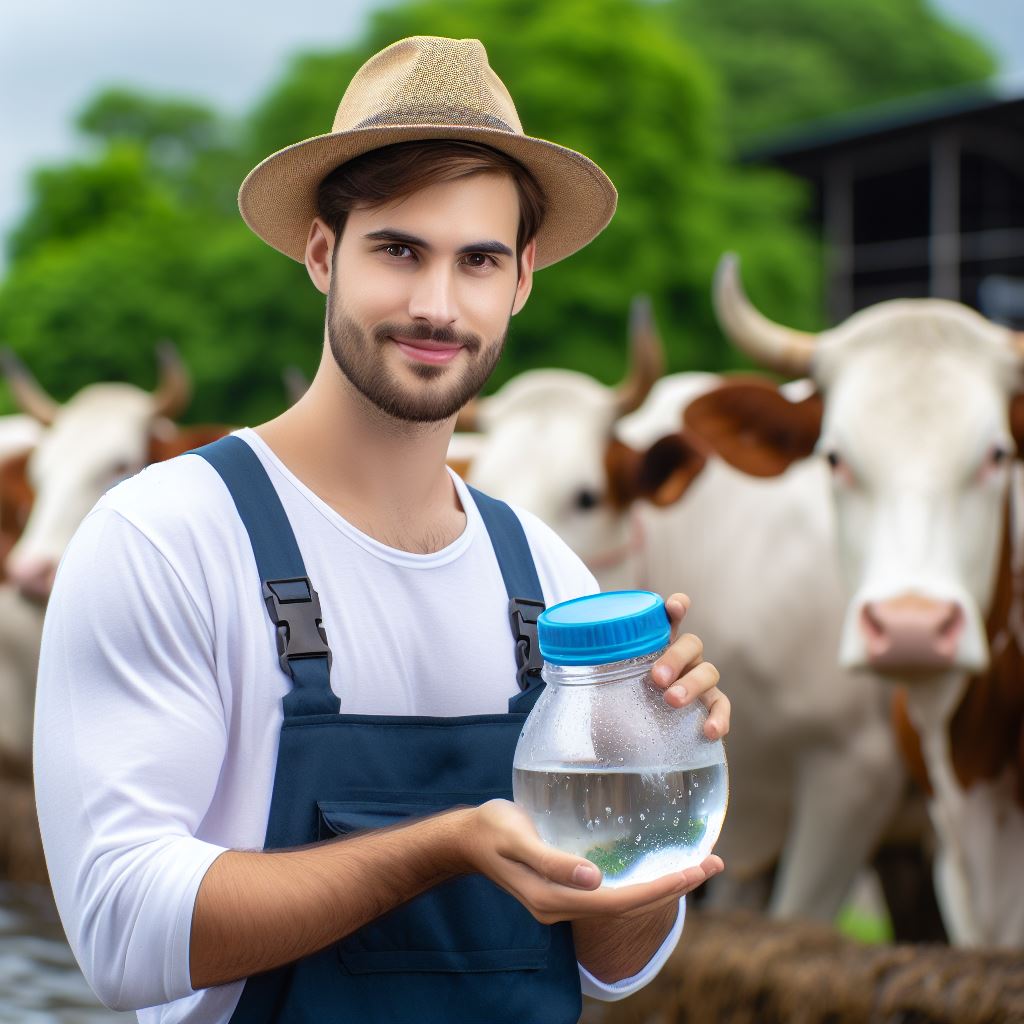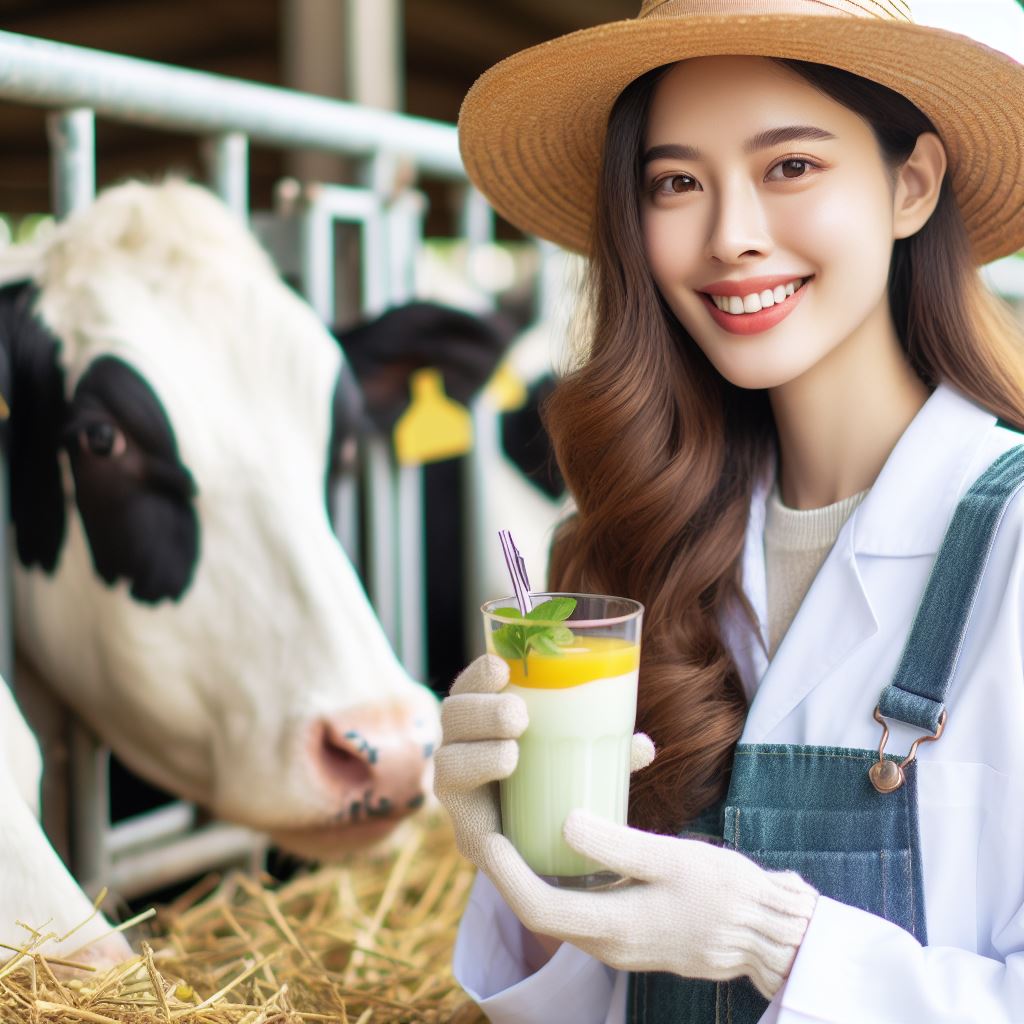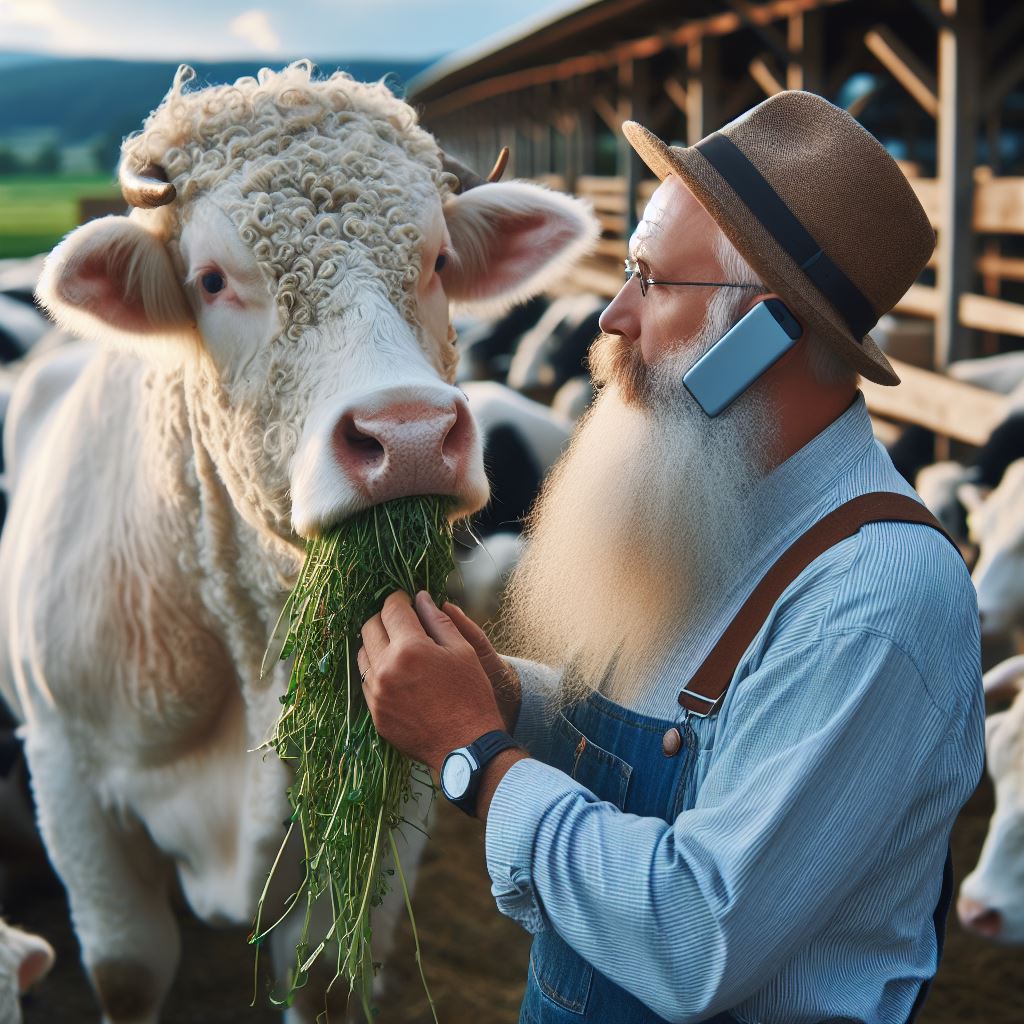Introduction
Agriculture plays a vital role in our lives, providing us with essential food and resources.
However, traditional livestock feeding practices have significant environmental consequences.
Eco-friendly livestock feeding, on the other hand, can help reduce these impacts and promote sustainable agriculture.
This section will provide tips on how to feed your livestock in an eco-friendly manner, benefiting both the environment and your farm.
Providing eco-friendly livestock feeding tips can help reduce environmental impact and promote sustainable agriculture.
Eco-Friendly Livestock Feeding Tips
- Opt for locally sourced feed to reduce transportation emissions and support local farmers.
- Include more forage in your livestock’s diet to minimize the need for grain-based feeds.
- Implement rotational grazing to promote the natural growth of pasture, allowing for regenerative practices.
- Utilize composting techniques to manage manure effectively and prevent nutrient runoff into water bodies.
- Supplement your livestock’s diet with alternative protein sources like insects or plant-based proteins.
- Reduce food waste by planning precise feed rations and storing feed properly.
- Implement efficient feeding systems, such as timed feeding or self-feeding, to minimize waste.
- Use natural feed additives and supplements to support your livestock’s health and reduce reliance on chemical inputs.
- Ensure proper hydration for your animals by providing clean water sources and avoiding water wastage.
- Regularly monitor and adjust your livestock’s feeding regime based on their nutritional requirements and changing seasons.
By following these eco-friendly livestock feeding tips, you can contribute to reducing environmental harm while promoting sustainable agriculture.
Implementing these practices not only benefits the planet but also ensures the long-term viability and profitability of your farm.
Stay tuned for the next section, which will delve into the specifics of each tip and provide further guidance on their implementation.
Read: Water Conservation: Farming Carbon Link
Importance of eco-friendly livestock feeding
The environmental issues caused by conventional livestock feeding practices
Conventional livestock feeding practices have detrimental effects on the environment. These include:
- Overuse of synthetic fertilizers: Conventional livestock feeding relies heavily on chemical fertilizers, which contribute to water pollution and soil degradation.
- Deforestation: The demand for land to grow animal feed leads to deforestation, resulting in habitat loss for many species.
- Water pollution: The runoff from animal waste contaminates water bodies, leading to eutrophication and the destruction of aquatic ecosystems.
- Air pollution: The release of ammonia and other toxic gases from livestock operations contributes to air pollution, harming human health and exacerbating climate change.
Benefits of adopting eco-friendly feeding strategies
- Reduced methane emissions: Ruminant animals, such as cows, generate significant amounts of methane, a potent greenhouse gas. Eco-friendly feeding strategies can help reduce methane emissions through dietary adjustments.
- Preservation of natural resources: Eco-friendly livestock feeding emphasizes sustainable practices, such as rotational grazing and utilizing locally sourced feed. These practices reduce the need for land and water resources, helping to preserve natural habitats.
- Improved animal health and welfare: Eco-friendly feeding strategies focus on providing animals with proper nutrition, reducing stress, and promoting their overall well-being. This can result in healthier livestock and improved product quality.
- Enhanced soil health: Eco-friendly livestock feeding practices, such as incorporating compost or organic fertilizers, can improve soil health, increasing its fertility and reducing erosion.
- Water conservation: By implementing efficient watering systems and managing manure properly, eco-friendly feeding strategies promote water conservation and reduce the pollution of water bodies.
- Cost savings: While there may be initial costs associated with transitioning to eco-friendly feeding practices, in the long run, they can lead to cost savings. This is due to decreased dependence on expensive synthetic inputs and improved overall efficiency.
- Consumer demand: With the increasing focus on sustainability and ethical practices, eco-friendly livestock products are in higher demand among consumers. By adopting such strategies, farmers can tap into this market and gain a competitive advantage.
In short, the adoption of eco-friendly livestock feeding strategies is of utmost importance.
Conventional practices have detrimental effects on the environment, but by implementing sustainable and efficient feeding methods, we can reduce environmental impacts, preserve natural resources, and improve animal health and welfare.
The benefits are numerous, and the shift towards eco-friendly practices is not only essential for the well-being of the planet but also for the long-term viability of the livestock industry.
Read: Urban Farming: Reducing Food Miles
Transform Your Agribusiness
Unlock your farm's potential with expert advice tailored to your needs. Get actionable steps that drive real results.
Get StartedEco-friendly livestock feeding tips
When it comes to raising livestock in an eco-friendly manner, there are several feeding tips that can make a significant difference.
By implementing these practices, farmers can reduce their environmental impact and promote sustainability in the agricultural industry.
Use of locally sourced feed
Supporting local agriculture has numerous advantages. Locally sourced feed reduces the carbon footprint associated with long-distance transportation of feed.
Additionally, it stimulates the local economy and fosters community resilience.
Incorporation of alternative feed sources
To further promote sustainability, farmers should explore alternative feed sources.
Insect protein and algae-based feeds are sustainable options that can be used to diversify livestock diets.
These alternatives are rich in nutrients, promote animal health, and reduce the reliance on traditional feed sources.
Precision feeding techniques
Precision feeding involves calculating the exact ration requirements of livestock to minimize waste.
By accurately determining the nutritional needs of animals, farmers can avoid overfeeding and reduce the amount of feed that goes unused.
Regular monitoring of feed intake allows for adjustments to be made accordingly.
Implementation of feed additives
Feed additives, such as probiotics, can enhance digestion and improve nutrient absorption in livestock.
This promotes healthier animals and reduces the need for antibiotics. Probiotics also contribute to better overall gut health, resulting in improved performance and reduced environmental impact.
Utilization of by-products
Utilizing food waste and agricultural by-products as feed is an effective way to minimize waste and maximize resource efficiency.
By repurposing these materials, farmers can reduce their environmental impact and save on feed costs.
This practice also contributes to a circular economy by recycling organic waste into valuable nutrients.
In essence, eco-friendly livestock feeding practices are essential for promoting sustainability in the agricultural sector.
By using locally sourced feed, incorporating alternative feed sources, practicing precision feeding techniques, implementing feed additives, and utilizing by-products, farmers can minimize their environmental impact while ensuring the health and welfare of their livestock.
These practices not only benefit the environment but also contribute to the long-term viability of the farming industry.
Read: Precision Agriculture: Cut Emissions Now

Case studies or success stories
Successful eco-friendly livestock feeding practices implemented by farmers or ranchers
Case Study 1: Organic Livestock Farming
John Smith, a cattle farmer in Ohio, transitioned his farm to organic practices five years ago.
He eliminated the use of chemical fertilizers and started utilizing natural methods for livestock feeding.
Case Study 2: Rotational Grazing
Mary Johnson, a rancher in Montana, implemented rotational grazing on her land.
This approach involves dividing the pasture into smaller sections and moving the livestock from one section to another to allow the vegetation to regenerate.
Case Study 3: Silvopasture
David Wilson, a farmer in Vermont, adopted a silvopasture system where livestock graze in wooded areas with scattered trees.
Showcase Your Farming Business
Publish your professional farming services profile on our blog for a one-time fee of $200 and reach a dedicated audience of farmers and agribusiness owners.
Publish Your ProfileThis practice not only provides shade and shelter for animals but also reduces soil erosion.
Demonstrating positive outcomes and their impact on the environment and animal welfare
Positive Outcome 1: Soil Health Improvement
By avoiding the use of chemical fertilizers and implementing organic livestock feeding practices, John Smith’s farm saw a significant improvement in soil health.
The soil became more fertile, supporting better crop growth.
Positive Outcome 2: Biodiversity Enhancement
Mary Johnson’s rotational grazing system allowed for the diversification of plant species in her pastures. This increase in biodiversity attracted more wildlife, resulting in a healthier ecosystem.
Positive Outcome 3: Reduced Environmental Impact
David Wilson’s adoption of silvopasture not only decreased soil erosion but also reduced the need for clearing land for grazing.
This led to the preservation of natural habitats and minimized deforestation.
Positive Outcome 4: Improved Animal Welfare
All the farmers who implemented eco-friendly livestock feeding practices noticed improvements in their animals’ overall well-being.
The organic feed resulted in healthier livestock with fewer health issues.
These case studies and success stories highlight the effectiveness of eco-friendly livestock feeding practices in promoting sustainable agriculture and achieving positive outcomes for both the environment and animal welfare.
By following the footsteps of these successful farmers and ranchers, others can also adopt similar practices to contribute to a greener and more sustainable future.
Read: Cover Cropping: Shield Against Carbon
Conclusion
Eco-friendly livestock feeding is crucial for sustainable agriculture and offers various benefits such as reducing environmental impact, improving animal health, and producing high-quality products.
By implementing eco-friendly feeding practices like reducing food waste, using native grasses for grazing, and integrating crop-livestock systems, readers can contribute to a greener future while improving their farm’s profitability.
Supporting sustainable agriculture practices not only ensures a healthier planet but also supports local farmers and their communities.
Use your purchasing power to buy sustainably raised meat and dairy products, and advocate for policies that promote eco-friendly livestock feeding.




